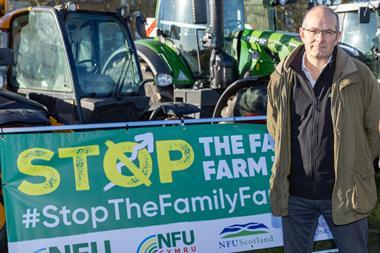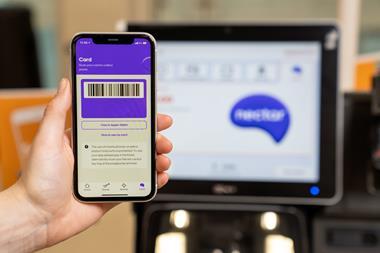Sainsbury’s efforts to become leaner and fitter have become the engine for deflation in grocery, as Ronan Hegarty explains
Increasing competition between the big multiples and seasonal price-cutting on key lines have combined to drag down grocery prices in July, according to The Grocer Price Index.
The 1.6% fall month-on-month, and the 0.7% drop since July 2004, is all the more startling because much of the deflation we have been tracking can be explained by Sainsbury’s efforts to become a leaner and more competitive animal in the retail jungle. Since July 2004, prices at Sainsbury have tumbled by an incredible 5%.
Strip out this Sainsbury effect and the prices we track would actually be 0.4% higher than this time a year ago.
The Grocer Price Index is designed to track inflation and deflation in the supermarket sector based on the prices of 100 grocery items stocked by the big four retailers - Tesco, Asda, Sainsbury and Morrisons/Safeway. The basket has been compiled using up-to-date consumer research to reflect the typical shopping habits of consumers and contains a wide range of key brands and own-label products from across all grocery categories, including ambient grocery, chilled foods, frozen, dairy, meat, fish and poultry, and fruit and veg.
In the first months following the launch of The Grocer Price Index in July 2004, we saw prices generally fall across the board. At launch, the average price for our 100-item basket was £173.77. By November 2004 this had fallen to just £170.64, before prices began to climb again - hitting a peak in February of this year at £176.09.
Then prices started falling again. But in June we saw a 0.9% rise month-on-month - reflecting the price hikes we have been tracking on many key commodity goods, particularly fresh produce and meat, as well as key branded and own-label grocery lines.
Nicola Mallard, manufacturing analyst at Investec, says our research shows that any price increases requested by suppliers are hard fought - even if they reflect rocketing oil prices, more expensive packaging and higher labour costs. “It helps that everyone is in the same boat in terms of having to deal with extra costs so retailers have to pay attention. But when it comes to asking for improved margins, they don’t appear to be as willing to listen,” she says.
Hard fought certainly describes what has been happening in the beef sector recently. Our Price Flash research for our Market Edge section shows that minced beef prices have climbed 21% since the start of this year. But this follows a price war between Asda and Tesco, with prices recovering from a very low base. Richard Cracknell, MD of beef processor ABP, says it is more telling to look at price trends over the medium to long term: “Minced beef prices have recovered in recent months but they are still lower than they were two years ago. And across the board in the beef category, we are still seeing nothing but deflation.”
With some price rises coming through, the latest fall in The Grocer Price Index is all the more surprising. So what’s caused it? Well, aside from Sainsbury effect, the sharp 1.6% fall in prices seen between July and June of this year seems to have been partly due to retailers offering lower prices on selected alcohol and fruit and veg lines during the key summer trading period.
Of those categories under pressure at the moment, alcohol is one of those having a tough time. Beer, for instance, is back in the promotional spotlight with the arrival of summer - and Somerfield was under fire this week for offering cut-price Stella Artois, Carling and Carlsberg Export (see p64).
Aside from these traditional flashpoints, and Sainsbury’s ongoing efforts to become more competitive, the underlying trend is for retailers to accept justifiable price increases and for some modest inflation to creep into the system. But with competition remaining fierce, many questions remain: how long will Sainsbury continue to cut prices? How will Morrisons respond once the Safeway integration is complete? And how far will Andy Bond go to protect Asda’s position as the country’s cheapest retailer from the constant threat posed by Tesco?
According to Mallard, it is this uncertainty that is worrying manufacturers. She says: “Most retailers seem to be going in the right direction at the moment on price but how long will it be before one breaks out of line and starts the whole deflationary cycle all over again?”
Increasing competition between the big multiples and seasonal price-cutting on key lines have combined to drag down grocery prices in July, according to The Grocer Price Index.
The 1.6% fall month-on-month, and the 0.7% drop since July 2004, is all the more startling because much of the deflation we have been tracking can be explained by Sainsbury’s efforts to become a leaner and more competitive animal in the retail jungle. Since July 2004, prices at Sainsbury have tumbled by an incredible 5%.
Strip out this Sainsbury effect and the prices we track would actually be 0.4% higher than this time a year ago.
The Grocer Price Index is designed to track inflation and deflation in the supermarket sector based on the prices of 100 grocery items stocked by the big four retailers - Tesco, Asda, Sainsbury and Morrisons/Safeway. The basket has been compiled using up-to-date consumer research to reflect the typical shopping habits of consumers and contains a wide range of key brands and own-label products from across all grocery categories, including ambient grocery, chilled foods, frozen, dairy, meat, fish and poultry, and fruit and veg.
In the first months following the launch of The Grocer Price Index in July 2004, we saw prices generally fall across the board. At launch, the average price for our 100-item basket was £173.77. By November 2004 this had fallen to just £170.64, before prices began to climb again - hitting a peak in February of this year at £176.09.
Then prices started falling again. But in June we saw a 0.9% rise month-on-month - reflecting the price hikes we have been tracking on many key commodity goods, particularly fresh produce and meat, as well as key branded and own-label grocery lines.
Nicola Mallard, manufacturing analyst at Investec, says our research shows that any price increases requested by suppliers are hard fought - even if they reflect rocketing oil prices, more expensive packaging and higher labour costs. “It helps that everyone is in the same boat in terms of having to deal with extra costs so retailers have to pay attention. But when it comes to asking for improved margins, they don’t appear to be as willing to listen,” she says.
Hard fought certainly describes what has been happening in the beef sector recently. Our Price Flash research for our Market Edge section shows that minced beef prices have climbed 21% since the start of this year. But this follows a price war between Asda and Tesco, with prices recovering from a very low base. Richard Cracknell, MD of beef processor ABP, says it is more telling to look at price trends over the medium to long term: “Minced beef prices have recovered in recent months but they are still lower than they were two years ago. And across the board in the beef category, we are still seeing nothing but deflation.”
With some price rises coming through, the latest fall in The Grocer Price Index is all the more surprising. So what’s caused it? Well, aside from Sainsbury effect, the sharp 1.6% fall in prices seen between July and June of this year seems to have been partly due to retailers offering lower prices on selected alcohol and fruit and veg lines during the key summer trading period.
Of those categories under pressure at the moment, alcohol is one of those having a tough time. Beer, for instance, is back in the promotional spotlight with the arrival of summer - and Somerfield was under fire this week for offering cut-price Stella Artois, Carling and Carlsberg Export (see p64).
Aside from these traditional flashpoints, and Sainsbury’s ongoing efforts to become more competitive, the underlying trend is for retailers to accept justifiable price increases and for some modest inflation to creep into the system. But with competition remaining fierce, many questions remain: how long will Sainsbury continue to cut prices? How will Morrisons respond once the Safeway integration is complete? And how far will Andy Bond go to protect Asda’s position as the country’s cheapest retailer from the constant threat posed by Tesco?
According to Mallard, it is this uncertainty that is worrying manufacturers. She says: “Most retailers seem to be going in the right direction at the moment on price but how long will it be before one breaks out of line and starts the whole deflationary cycle all over again?”


















No comments yet